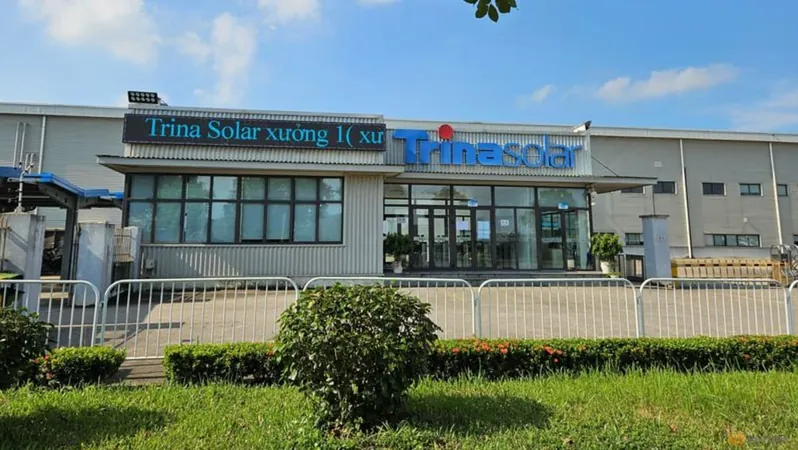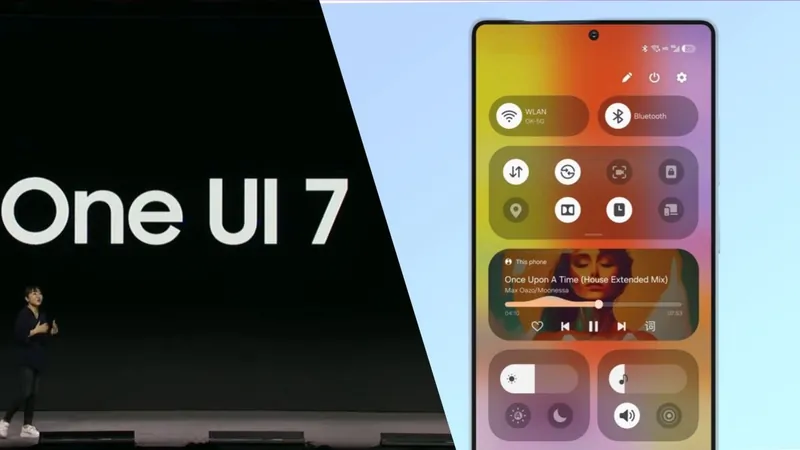
Chinese Solar Giants Outsmart U.S. Tariffs: The Race for Global Dominance Intensifies
2024-11-04
Author: Daniel
Introduction
Chinese-owned solar manufacturers are facing significant challenges in Vietnam, where U.S. trade tariffs have forced them to cut production and lay off workers. In response, these nimble firms are shifting their operations to neighboring Indonesia and Laos, where they can sidestep U.S. tariffs and maintain their market edge. In fact, the capacity of new Chinese solar factories being established in these countries is substantial enough to supply nearly half the solar panels installed in the United States last year, according to reports from Reuters.
Strategic Relocation and Market Dominance
This strategic relocation is part of a broader trend in which Chinese solar companies are actively shrinking their output in existing facilities while rapidly building new plants elsewhere. With China accounting for around 80% of the world’s solar shipments, these firms have managed to maintain dominance in both U.S. and global markets despite facing a barrage of tariffs aimed at curbing their influence over the past decade.
Production Surge in Indonesia and Laos
A report highlights that in the last 18 months, multiple Chinese or China-affiliated solar projects have launched operations in Indonesia and Laos, collectively boasting a solar panel capacity of 22.9 gigawatts (GW). This production surge is particularly notable as the U.S. market remains the world’s second-largest solar market, characterized by high average prices that are about 40% greater than those in China over recent years.
Impact on U.S. Manufacturers
The implications of this shift are significant for U.S. manufacturers, who argue that they cannot compete with the low prices of Chinese products due to perceived unfair advantages gained through government subsidies. These concerns have led to calls for stricter enforcement of trade tariffs, especially regarding the practices of Chinese firms leveraging third countries to skirt U.S. trade regulations.
Consequences in Vietnam
Moreover, the impact of U.S. tariffs is being acutely felt in Vietnam, where companies like Longi and Trina Solar have had to make tough decisions, leading to job losses for hundreds of workers. In contrast, the surge of Chinese investments in Indonesia illustrates a marked shift in focus and strategy as companies seek out new export bases while navigating the intricacies of U.S. trade policies.
Cat and Mouse Game
Quoting trade expert William A. Reinsch, there appears to be a 'cat and mouse game' unfolding between U.S. officials and Chinese solar firms, with the latter often managing to stay one step ahead. As mentioned by Republican Congressman John Moolenaar, there is a growing bipartisan consensus around the need for tougher tariffs to protect American manufacturing interests.
Political Landscape and Future Outlook
The ongoing U.S. election adds another layer of complexity to this landscape, with proposals from figures like former President Donald Trump advocating for broad tariffs on Chinese imports, while other leaders warn of the potential increases in consumer prices tied to such strategies.
Conclusion and Strategic Moves
Looking at the future, experts predict that the U.S. solar manufacturing landscape could see significant changes, particularly with Chinese firms ramping up production on American soil to capitalize on local incentives. With at least 20 GW of annual production capacity projected to be operational in the U.S. within the year, the competition will continue to intensify. In a strategic move, JinkoSolar has also signed a deal to establish a 10 GW solar plant in Saudi Arabia, showcasing the lengths to which these companies will go to secure their place in the global market. As the battle for solar dominance escalates, all eyes are on how tariff policies and corporate strategies will evolve in the coming months.

 Brasil (PT)
Brasil (PT)
 Canada (EN)
Canada (EN)
 Chile (ES)
Chile (ES)
 España (ES)
España (ES)
 France (FR)
France (FR)
 Hong Kong (EN)
Hong Kong (EN)
 Italia (IT)
Italia (IT)
 日本 (JA)
日本 (JA)
 Magyarország (HU)
Magyarország (HU)
 Norge (NO)
Norge (NO)
 Polska (PL)
Polska (PL)
 Schweiz (DE)
Schweiz (DE)
 Singapore (EN)
Singapore (EN)
 Sverige (SV)
Sverige (SV)
 Suomi (FI)
Suomi (FI)
 Türkiye (TR)
Türkiye (TR)